Teaching Vowel Teams and Diphthongs
Today I wanted to stop by and share some strategies for teaching vowel teams and diphthongs in our classroom! It’s always challenging to teach spelling patterns that aren’t easily decodable! Growing up, I remember the rhymes “when 2 vowels go walking, the 1st one does the talking” and “I before E except after C and sounding as A in neighbor and weigh.” Who else remembers those???
Here’s the thing…those still hold true…and they are a good tool for the most part. But our students need PRACTICE with these words in authentic and engaging ways. When our little ones are reading a challenging text and they get to a new word they MIGHT remember to say the rhyme…but they probably won’t! And some words don’t follow that pattern. We have to offer MANY engaging experiences to work with words so that they have lots of tools to use during reading. 🙂 We want them to be so familiar and COMFORTABLE with challenging spelling patterns that they feel confident in word solving.
Make sure you read the entire post. Down at the bottom, you’ll find a free download of words list you can use your vowel teams unit!
I recently spent some time working with some students who were reading on a level H. Their teacher told me they were struggling to read words with vowel teams so I brought in these activities. These words were challenging but NOT impossible. I 100% believe in the Words Their Way philosophy…students should practice words that they “use but confuse” in their writing. This means that the words aren’t completely new to them but they haven’t mastered them yet. For reading, I think this means words that they can tackle with support…just like an instructional reading level. We don’t want to give students too easy in word work…then they’re not growing. But if the words are TOO challenging, it won’t be effective.
Here are some of the activities we worked on together. 🙂
To introduce the lesson, we added sticky notes to our anchor chart. As we added them, students shouted out words that had that sound. They came up with some great ones! If the word didn’t have the same spelling I just let it go. We were focusing on the sounds each pattern makes for this part. 🙂
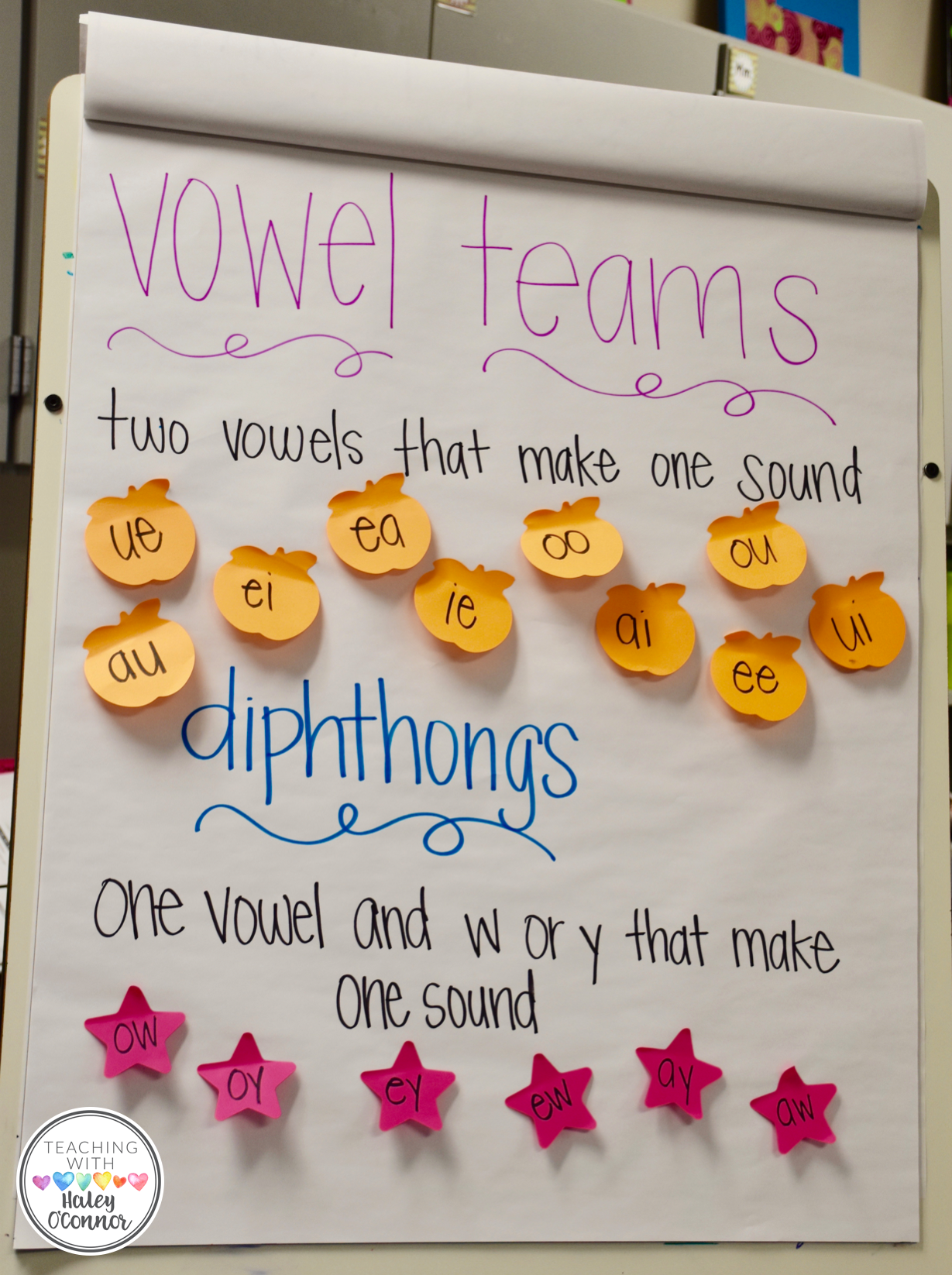
After the chart, we did a fun matching game. They worked together to match up words and pictures. The pictures provided a ton of scaffolding for them so they were super successful and felt confident as we went through the rest of the activities. I included words with lots of different vowel teams but you could also just give them the ones they are working on. Giving them 5-6 matches would be a perfect guided reading warm up.
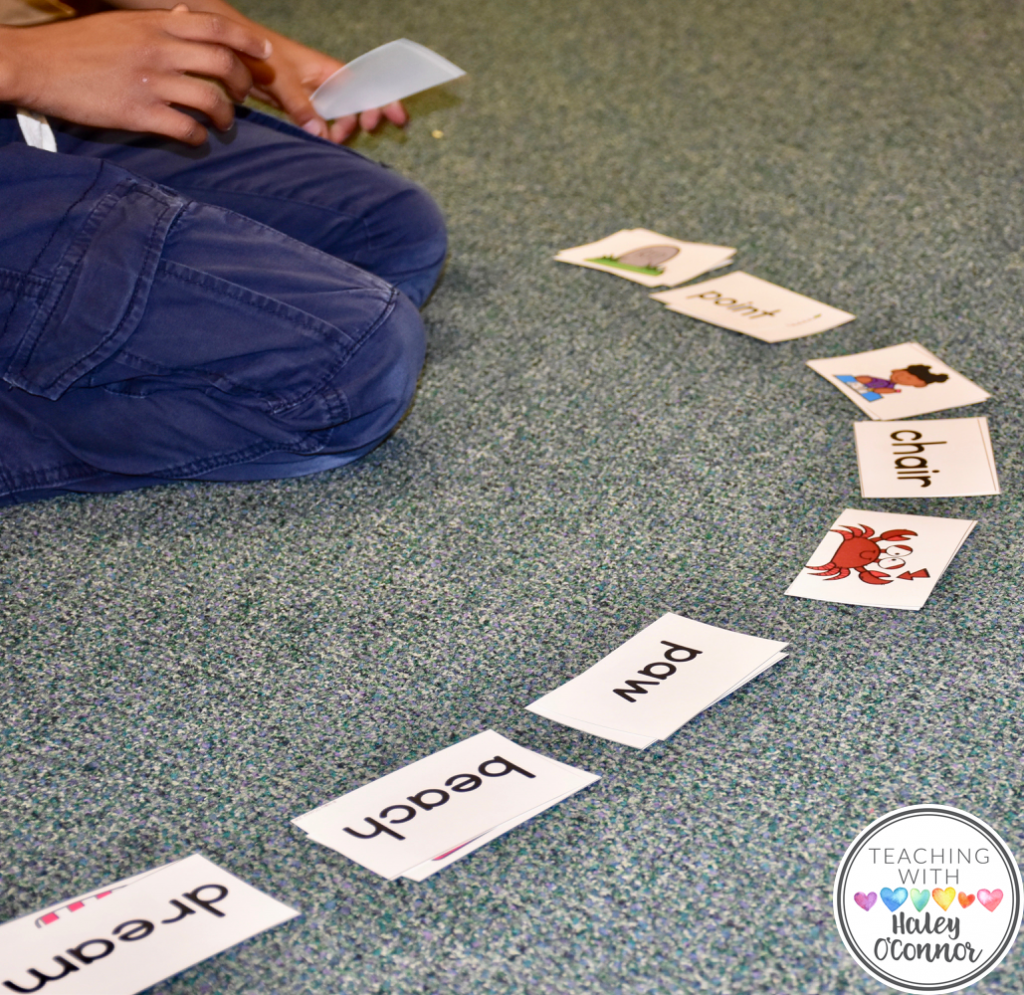
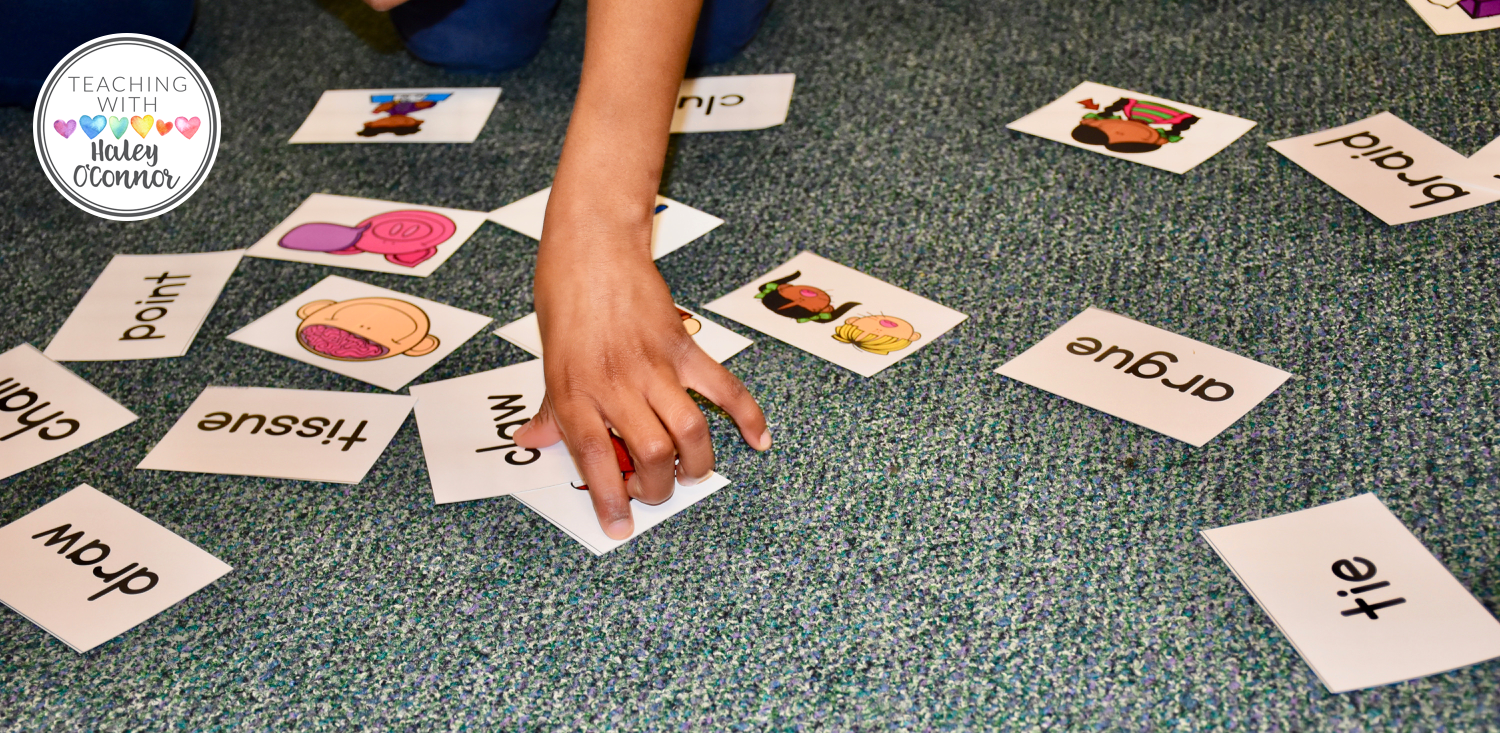
Since we were in a small group setting we did these activities on the floor…but they would also be perfect for pocket chart or in a literacy center tub! After matching, we put together some silly sentences. In a literacy center situation, I would have them record their sentences on a sheet of paper or dry erase board.
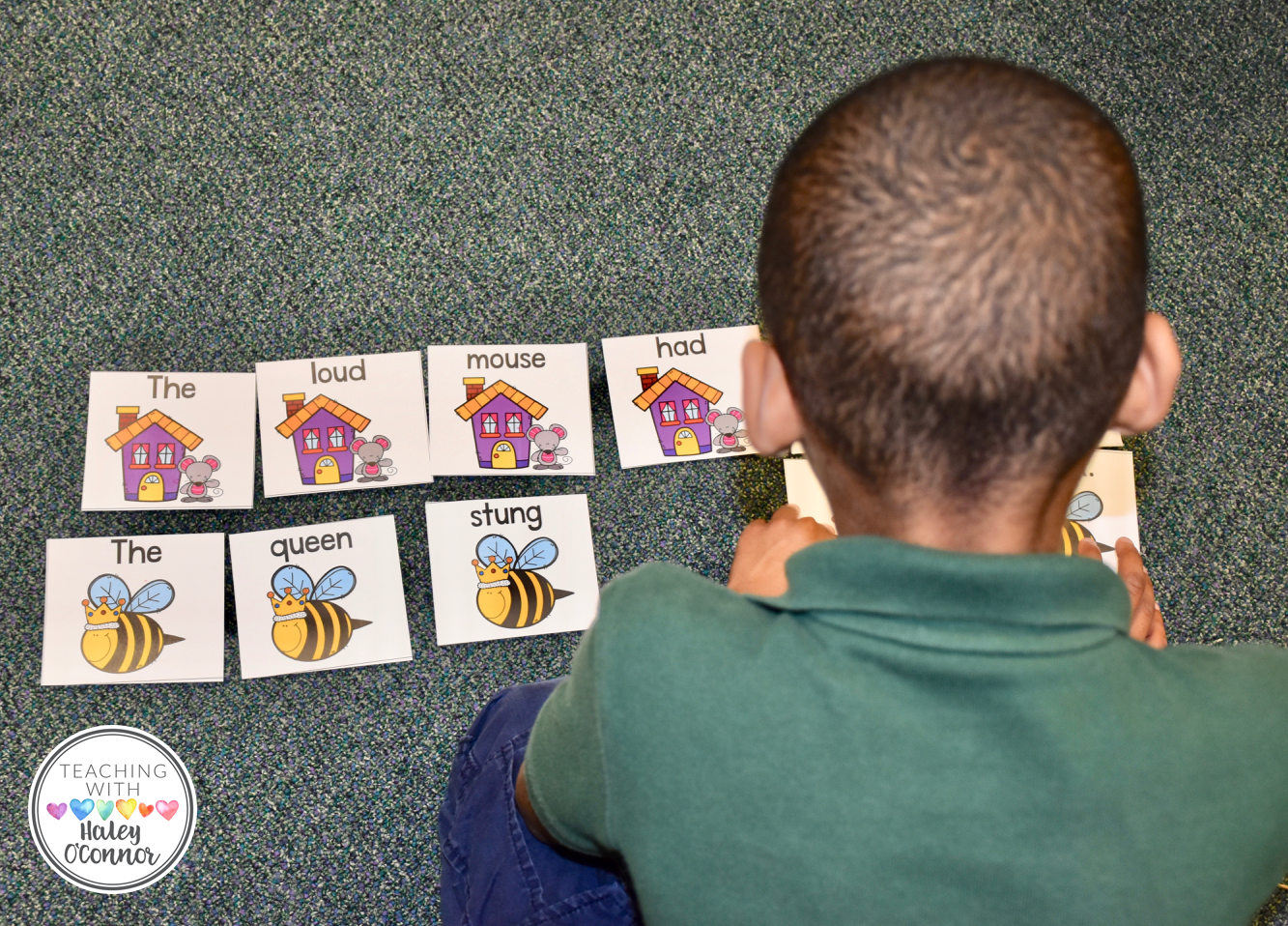
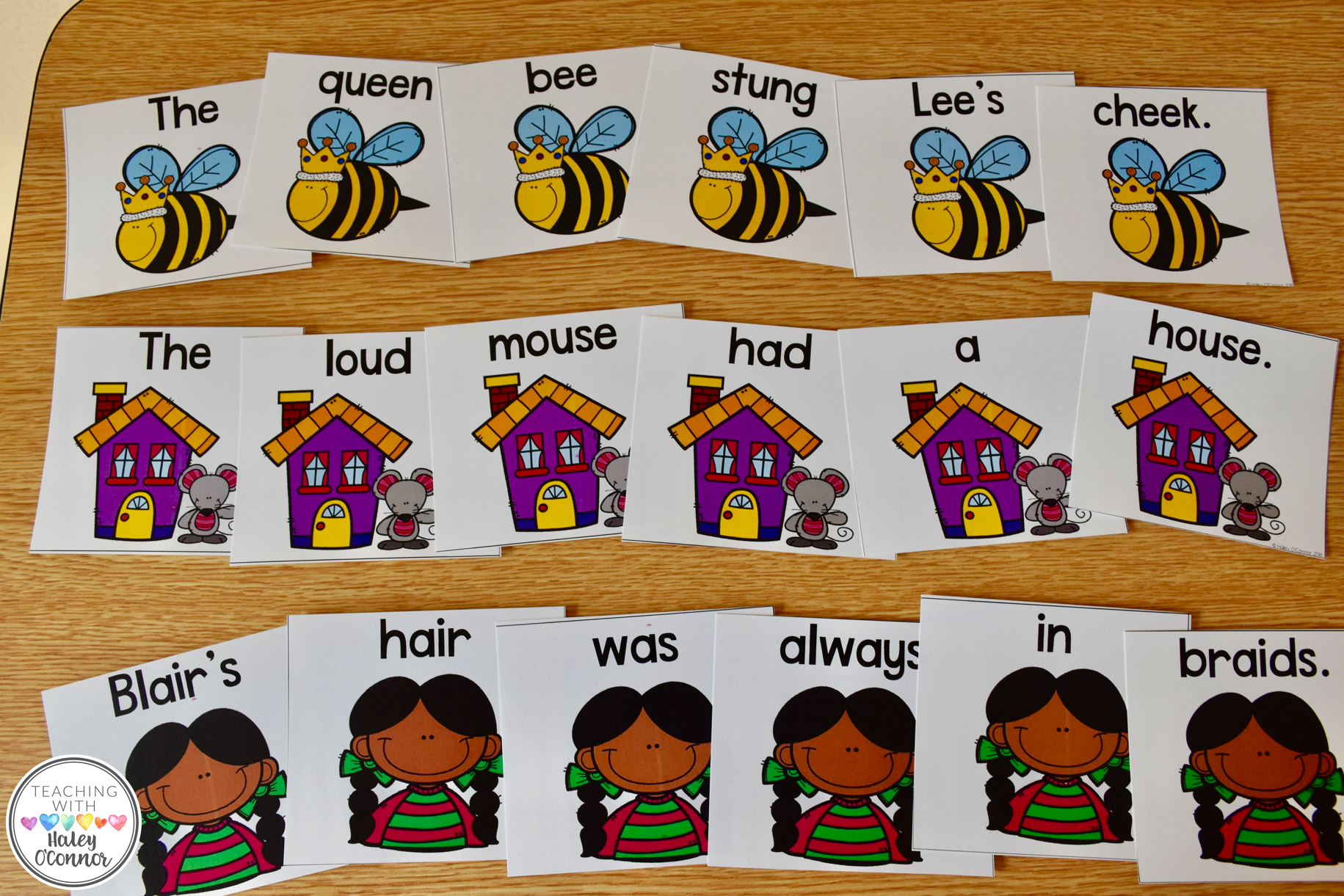
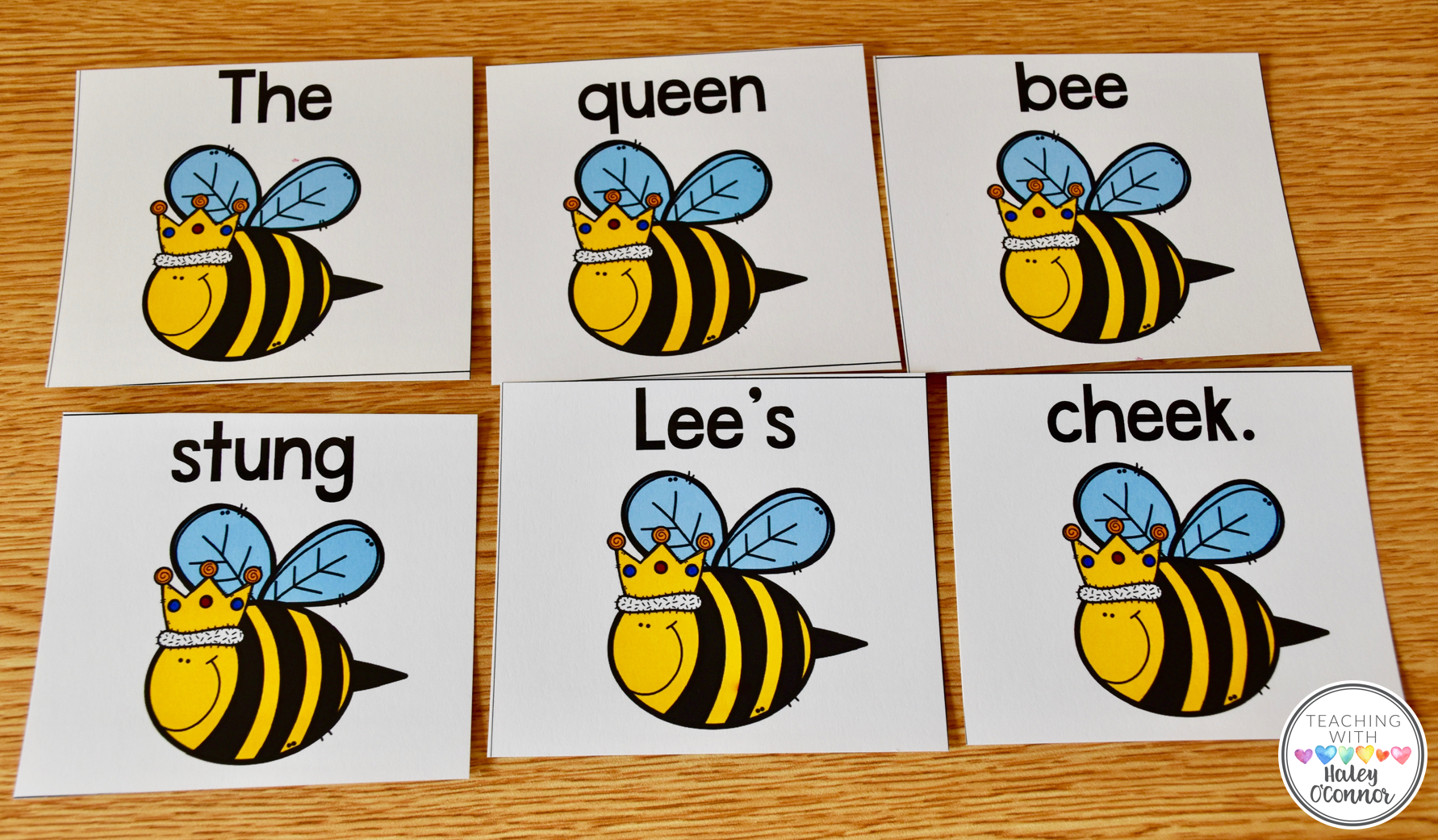
We played Spin and Read next…I didn’t get a ton of good pictures because I was helping them hold the pencil up.
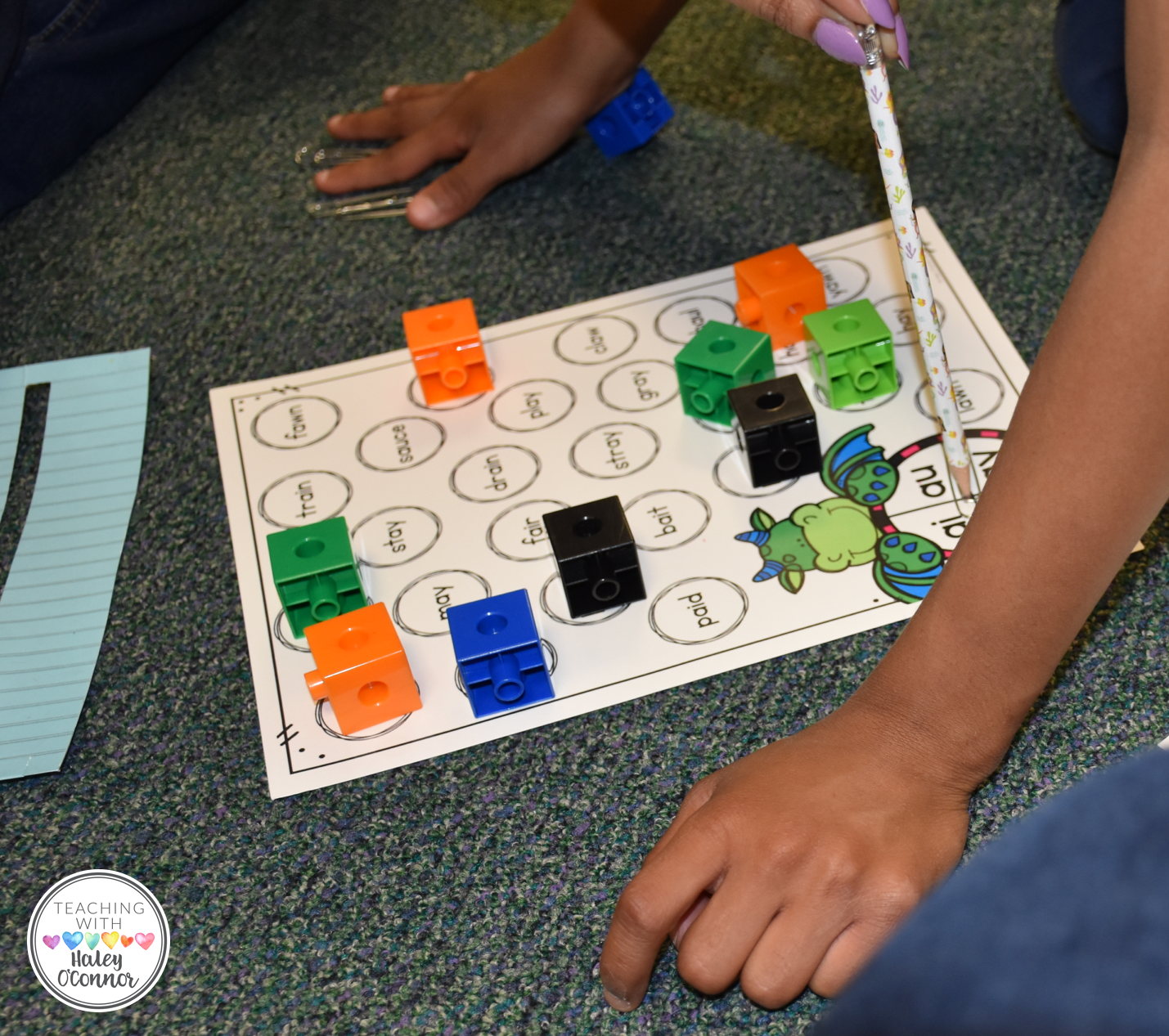
After the game, they did a little independent practice sorting and reading some words. I called them over individually and had them read the words to me. We also got some quick vocabulary work in with words like due and foe.

I’m planning on going back to work with these little nuggets over the next few weeks…here are some of the other activities we will work on.
I think that sorts are SO important for word study. They allow students to see words they might not normally encounter, and build their phonemic and phonological awareness. My Vowel Team pack has 4 sorts included for you to use with your class.
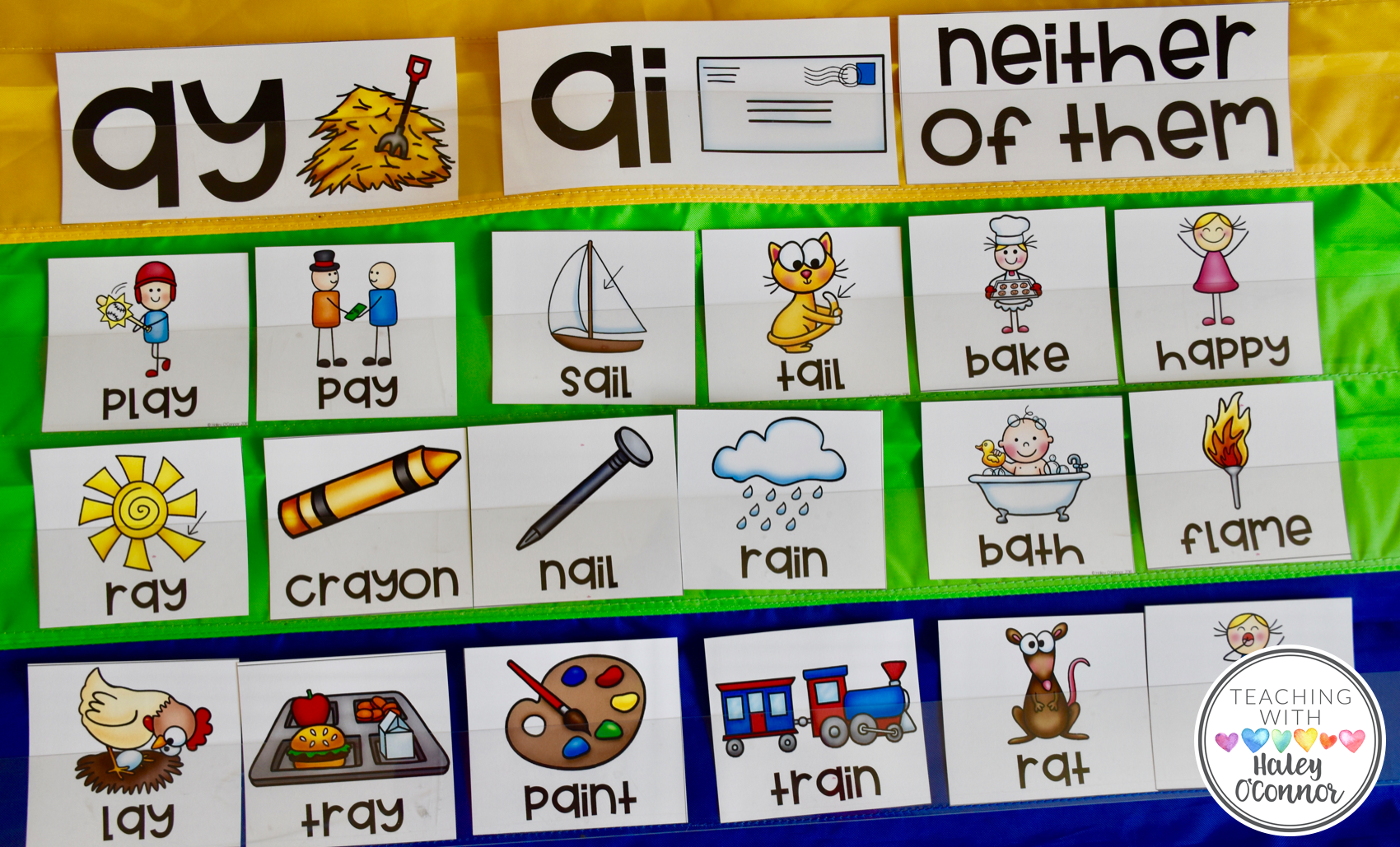
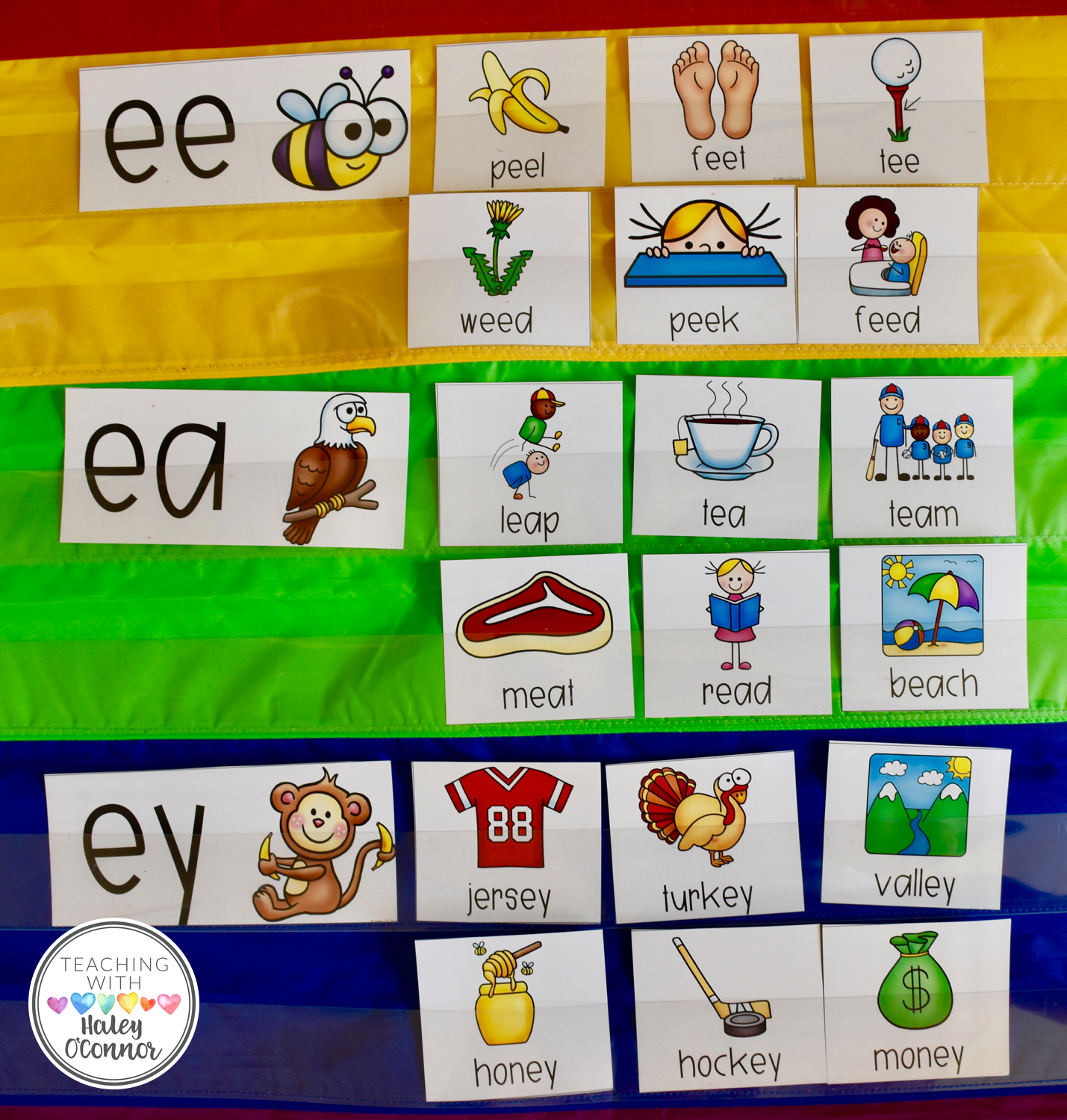
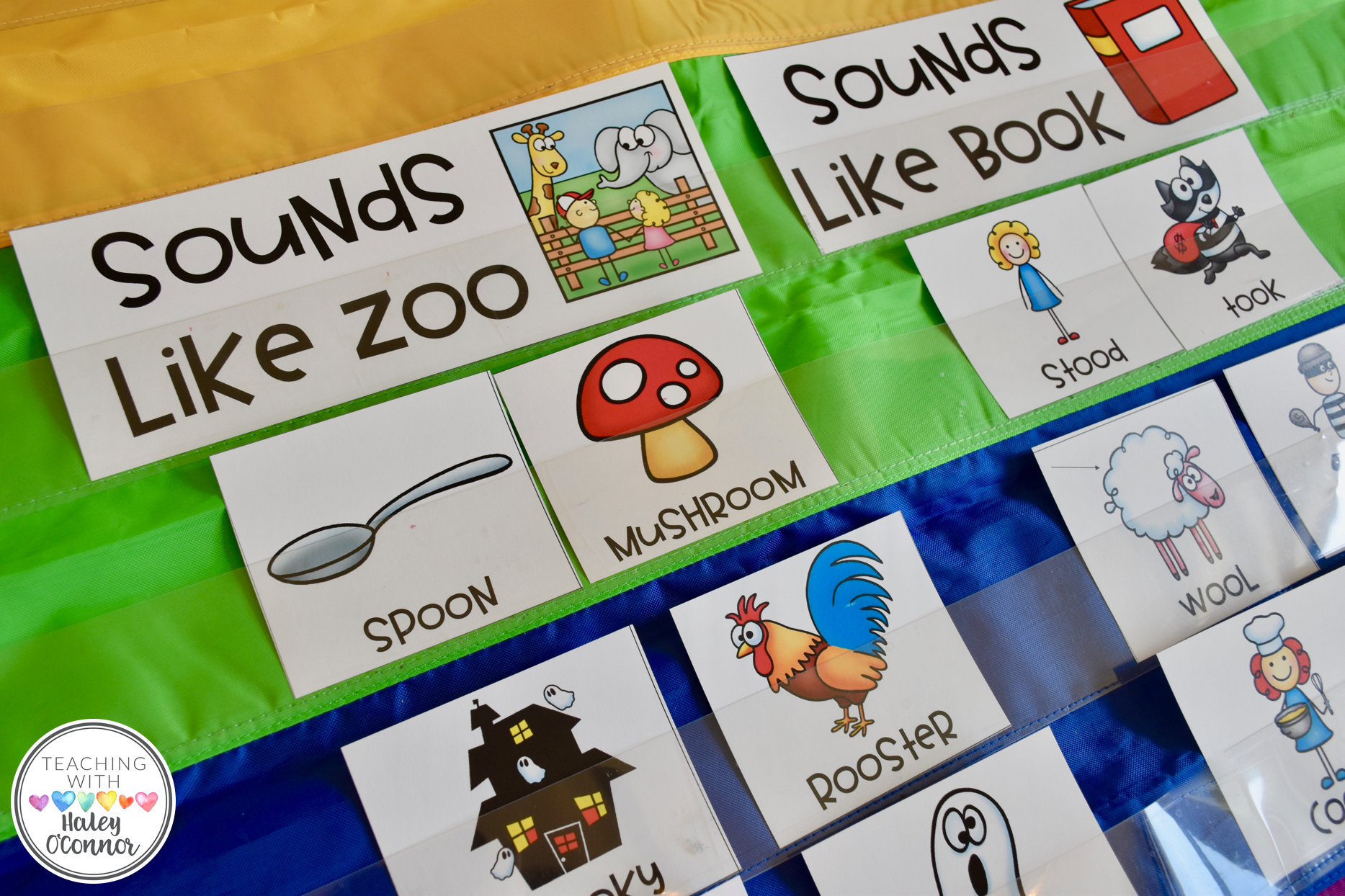
Anytime you can add dice to an activity, it automatically makes it more engaging! Roll and Read is a super fun way to practice fluency.
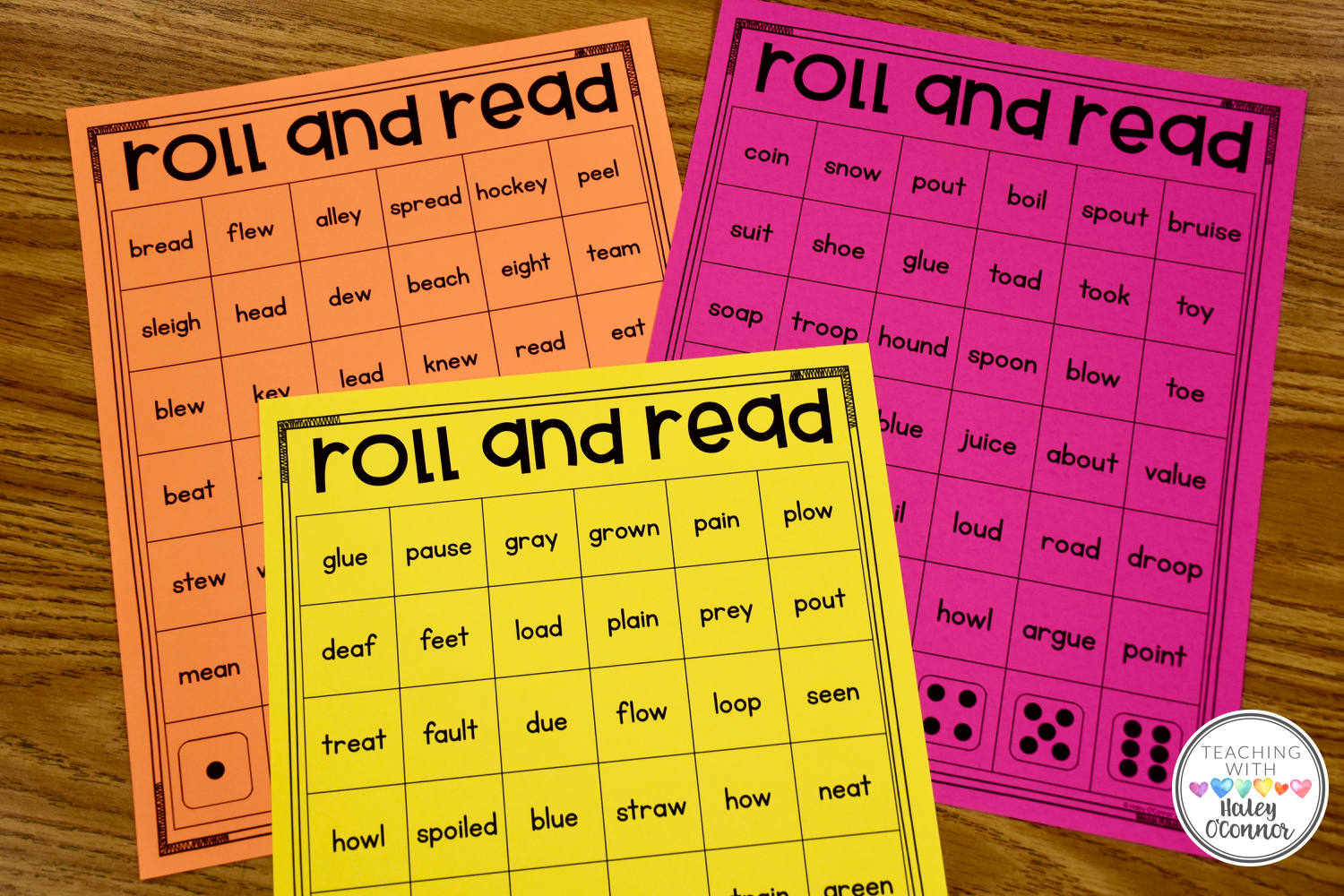
After some practice, students will be ready for more challenging activities…like filling in the missing vowel team. You could use letter tiles, a dry erase marker, or magnetic letters for this activity! 🙂
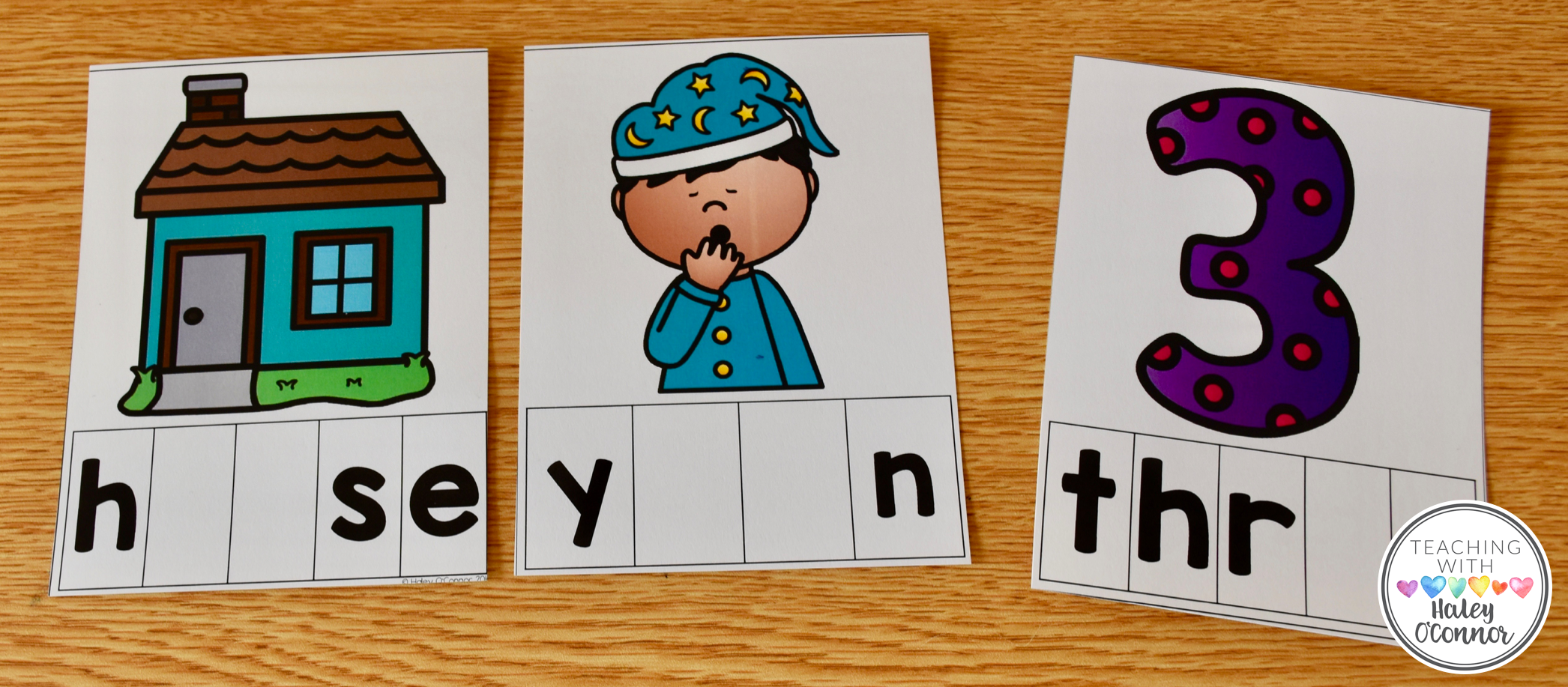
I also found a few fun Youtube videos that you could play to build in more practice.
I also included these word lists so that you don’t have to spend hours brainstorming and searching! I can tell you that it took a LONG time to come up with these word lists, so hopefully it saves you some time! They’re perfect to use as spelling lists, for anchor charts, or any other way you can think of! I would NOT recommend giving them to students if they can’t read them. If they can’t read them, they’re definitely not ready to write them. 🙂

Finally, my Vowel Teams and Diphthongs Packet is full of other resources and activities to use in your classroom. 🙂 It’s full of things you can use to keep your little readers engaged and challenged without having to spend hours prepping and planning! 🙂
I created a Pinterest board with lots of my favorite pins from all across the internet!
Thank you so much for reading this post! I hope it’s super helpful to you! What other fun ideas do you have for teaching vowel teams? Let me know! 🙂



